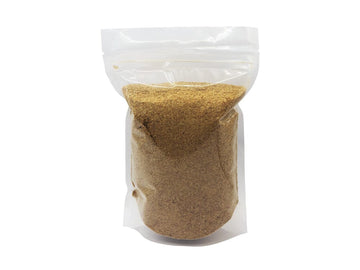With a wide variety of feeders available locally and online, Dubia Roaches (Blaptica dubia) are rapidly becoming one of the most popular choices. It is no accident. Dubia Roaches are popular because they rate highly in so many different areas:
Size: Dubia Roaches, throughout their life cycle, come in a range of sizes, from 1/8" as babies, or "nymphs" to 1 1/2" – 2" as adults. This allows Dubia Roaches to serve as satisfactory prey items for any insect eating animal. In many cases, the roaches will grow along with your pets, with a new supply constantly available as they breed and mature.
Lifespan: Dubia Roaches are long-lived: males usually live 12-18 months while females may live up to 2 years. Compare this to the average 9-week lifespan of crickets and the tendency of mealworms to morph into beetles within a month and become inedible. Blaptica Dubia are able to breed by 4 months of age and can continue breeding for a year or more. They are edible in all phases of their life cycle.
Nutrition: Dubia are more nutritious than mealworms, superworms or crickets in terms of the relative amount of protein (up to 23% in Dubia roach nymphs as compared to 16-20% in the other feeders). Protein, in particular, is more important for reptiles than fats or carbohydrates (although smaller amounts of these two types of nutrients are required as well).
| Species | Moisture | Protein | Calcium (mg/100g) | Fat | Ash |
| Dubia Roach | 61% | 23% | 20 | 7% | 2% |
| Cricket | 74% | 18% | 14 | 6% | 1% |
| Super worm | 59% | 20% | 10.8 | 16% | 1% |
| Mealworm | 59% | 10% | 3.28 | 13% | 1% |
| Silkworm | 76% | 64% | 34 | 10% | 7.5% |
| Phoenix Worm | N/A | 17% | 34 | 9.5% | N/A |
| Butterworm | 58.54% | 16.2% | 42.9 | 5.21% | 1.04% |
| Waxworm | 61% | 16% | 13.14 | 20% | 1% |
Safety: Dubia Roaches do not climb or fly: As long as they are kept in a smooth glass or plastic enclosure, Dubia Roaches are unable to escape by climbing or flying out. Although the male roaches, who, in contrast to the females, have wings, are able to hover briefly, they are unable to gain any altitude and escape from a smooth-sided container. If any roaches should leave their enclosure, usually due to human carelessness or gaps in front-opening reptile cages, they will not survive or breed in the temperate climates where many reptiles are kept.
Storage: Roaches do best out of sight: Dubia Roaches prefer dark, warm areas. As long as they are kept at the appropriate temperatures to promote breeding (90-95 degrees F, or as low as 68 degrees F if breeding is not desired), their enclosures can be situated in a dark closet or unused room.
Husbandry: Dubia Roaches are easy to care for: Simply provide a moisture source, gutload and vegetable parings to enable your roaches to eat to their hearts’ content. See our dubia roach care page for complete information.











